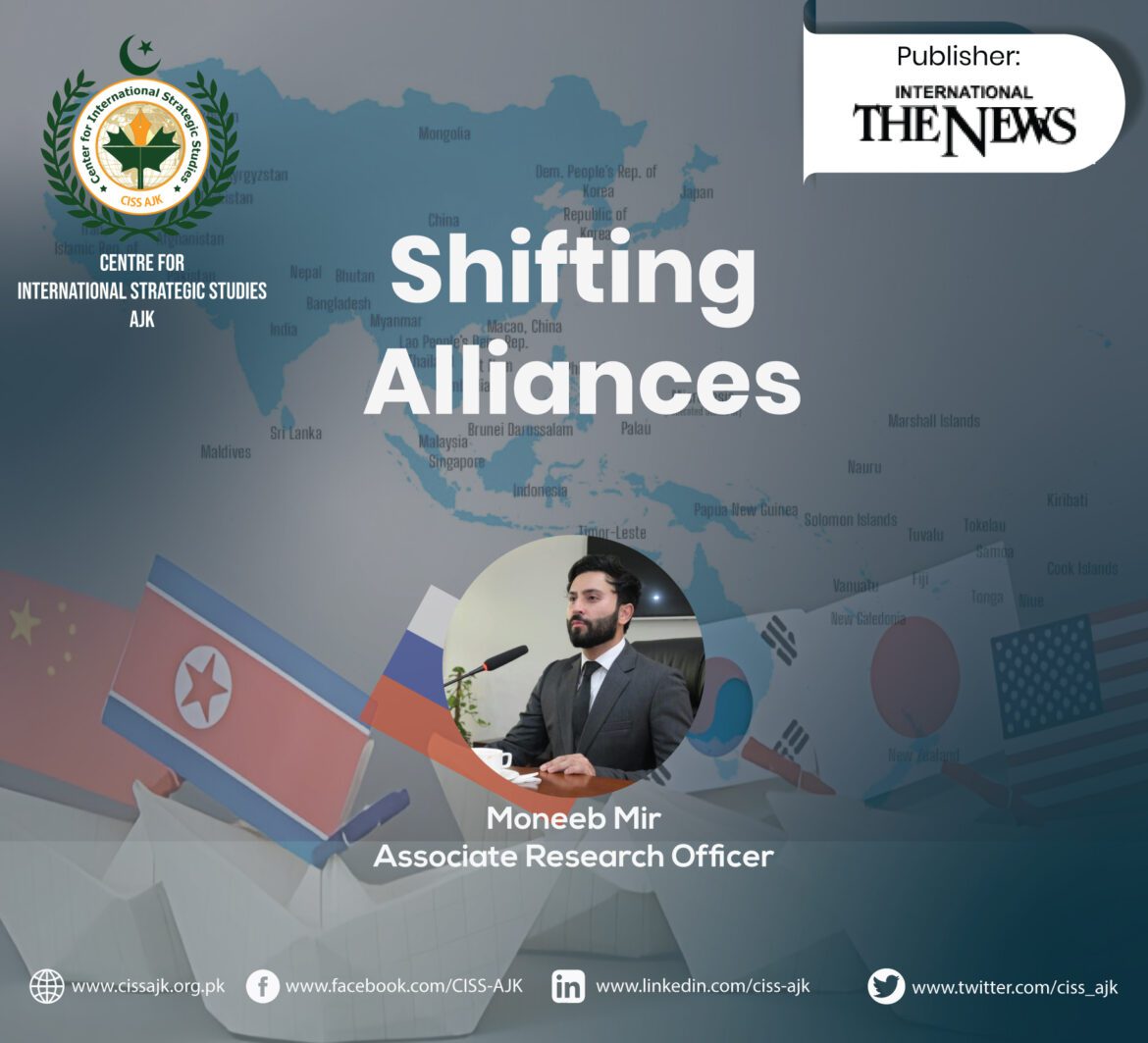The visit followed North Korean leader Kim Jong Un’s recent six-day visit to Russia, highlighting the complex geopolitical dynamics in the region.
This could be seen in response to last month’s summit in Camp David, where long rivals, Japan and South Korea, which historically did not share amicable relations, sat together along with the US to form a security partnership.
Amid intensifying geopolitical tensions in the Pacific, China might feel under threat, however, security partnership against China might be ineffective.
China used to see the historical rivalry between South Korea and Japan as a boon, since it divided the potential opposition to China in the Pacific. Both countries are now getting closer while making comments about the Taiwan Strait, which cuts through the espoused beliefs of the Communist Party, as it claims the self-governing, democratic island of Taiwan as a Chinese territory, per its famous One China Policy.
The US has long held the policy of strategic ambiguity towards Taiwan, which means that China has to keep guessing whether the US would respond to an act of aggression against Taiwan. This has made Taiwan remain stuck in a catch-22 situation, wondering whether they would be left alone in case of any adventurism with China.
However, American overtures of uniting its partners in the Pacific, its open geopolitical rivalry against China, its doling out of military aid and arms deal worth of millions of dollars to Taiwan to strengthen Taiwanese asymmetric defences can give an impression of Washington’s shift to create a ruse of a de facto strategic clarity as to back Taiwan in case of its war with China.
Or at least, creating a united front in the Pacific to take on China in case of its war with Taiwan – about which China may fear that this can eventually embolden Taiwan to announce independence – but this might not happen.
China’s military strategies seem to contemplate larger-scale regional offensives aimed at the US military’s key access points in the area. As a result, America’s closest allies in the region increasingly anticipate being drawn into a conflict, regardless of their intentions.
Given the increasing likelihood of a sudden, region-wide conflict outbreak, planners would understandably prefer a system of joint command and control and integrated deterrence, much like the structures seen in Nato. This is not the first time it is happening.
Following World War II, the US established its network of bilateral alliances in the Pacific region through a series of negotiations. These negotiations led to the creation of individual treaties with countries like Japan and the Philippines, as well as the ANZUS treaty, which included Australia and New Zealand. Subsequently, security treaties were also formed with Thailand, South Korea, and Taiwan. However, the Taiwan treaty was replaced in 1979 by the Taiwan Relations Act after the normalization of US relations with Beijing.
There was also an attempt to create the Southeast Asia Treaty Organization (Seato), which resembled Nato’s collective security model but ultimately disintegrated amid the escalation of the Vietnam War, eventually dissolving in 1977.
This resulted in the establishment of a security system known as the ‘hub and spokes’ model, where the US served as the central hub, while the bilateral alliances with individual countries acted as spokes, forming a security framework in the region. This arrangement differed from Nato as it did not entail collective security commitments or the creation of a military bloc.
There are also compelling arguments against the formation of an Asian Nato, given the complexities and contradictions of today’s strategic landscape. In contrast to the early cold war era when Nato members had limited economic ties with the Soviet Union, China is now the primary trading partner for nations like Japan, South Korea, Australia, and many other US allies and partners in the region.
These countries have expressed their intention to eventually improve their relationship with Beijing, even amid current tensions, and they recognize that a Nato-style alliance could hinder that prospect. Additionally, concerns about getting drawn into conflicts with varying risk tolerance levels among potential alliance members, especially regarding Taiwan, pose another significant obstacle.
Furthermore, countries with close alliances, such as Australia and Japan, would argue that in a competitive environment for influence across multiple military and non-military domains, a regional alliance could alienate crucial nations in Southeast Asia and the Pacific.
The recent Camp David Summit among Japan, South Korea, and the US signals a significant shift in Asia-Pacific geopolitics, with an evolving partnership to address regional security, especially concerning China. While falling short of forming an Asian Nato, this collaboration offers benefits like enhanced security cooperation but carries risks of tensions with China.
Historical grievances, economic ties, and risk differences make a full alliance unlikely for now. Responsible diplomacy and leadership are crucial for regional peace and stability. The future in the Pacific’s evolving geopolitical landscape and China’s response remain yet to be seen.
The writer is a researcher at the Centre for International Strategic Studies, AJK.

